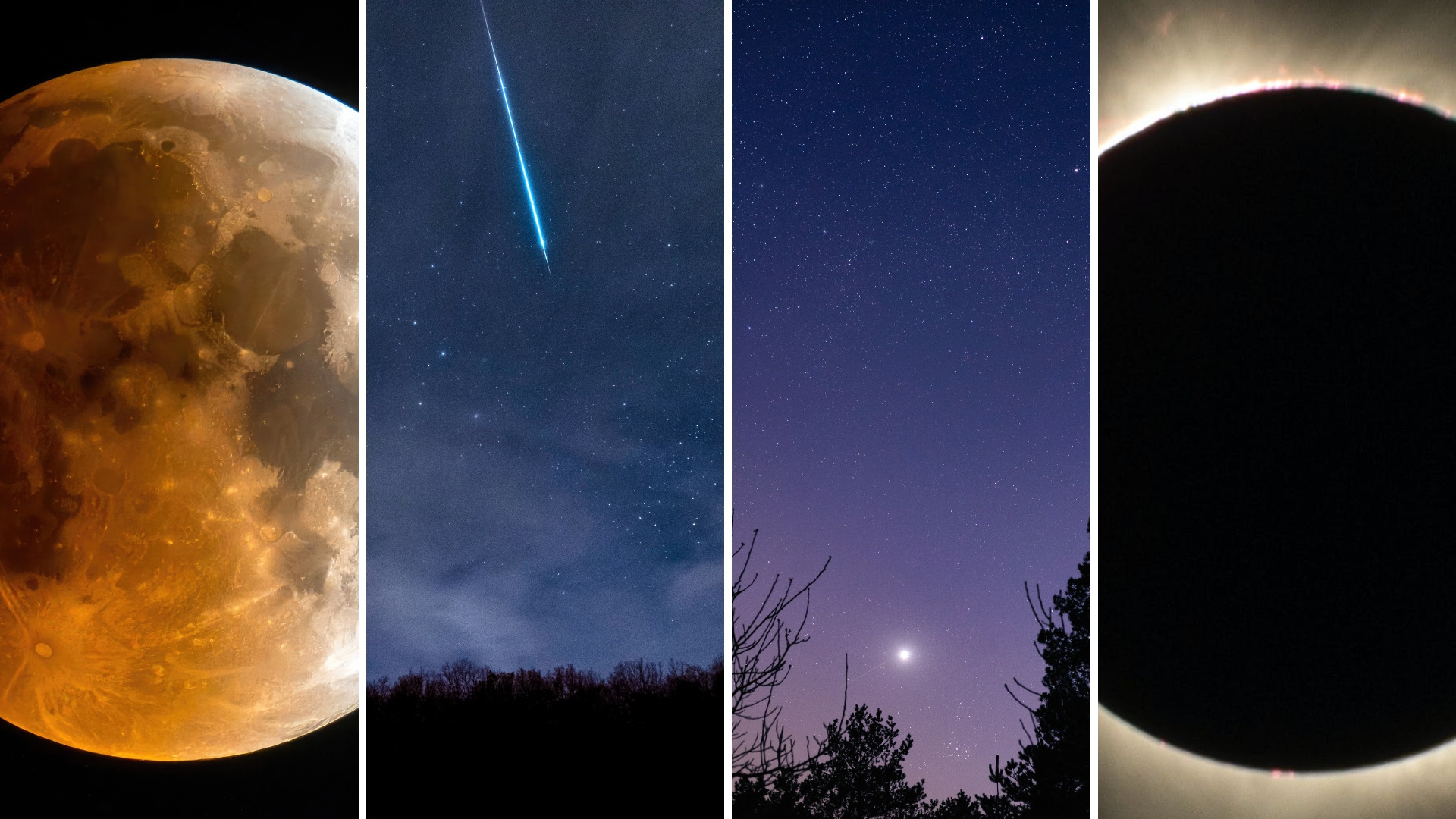This creepy photo of a dying star looks like a portal to the underworld
The sooty view from the Hubble Space Station shows the raw stuff of stars.
Just in time for Halloween, the long-running Hubble Space Telescope has captured a creepy image of a star surrounded by soot.
The star, an aging red giant called CW Leonis, appears to be embedded in orange spider webs. The image shows sunbeams penetrating the sooty carbon surrounding the star, which is running out of fuel. You can zoom into the spooky star in this video.
"The carbon was cooked up in the star's core as a waste product of nuclear fusion," NASA wrote in a statement, noting that CW Leonis is ejecting carbon-filled soot as fuel supplies runs low.
"Anyone with a fireplace knows that soot is a nuisance," the agency continued. "But carbon ejected into space provides raw material for the formation of future stars, planets, and maybe even life. On Earth, complex biological molecules consist of carbon atoms bonded with other common elements."
Related: These Scary Things in Space Will Haunt Your Dreams
CW Leonis is the closest carbon star to Earth, shining at a distance of roughly 400 light-years away — about 100 times the distance of the closest star system, Alpha Centauri. The star is at a latter life stage where it has shifted from fusing hydrogen in the core, like the sun does, to fusing it in its outer layers.
NASA said this stage of a red giant's life gives it a "second lease"; studying such stars can also allow us to predict how our own sun will behave late in its lifespan, billions of years from now. The sun is fusing hydrogen in its core for the time being, but late in the future it will run out of hydrogen and the star will start to collapse.
Breaking space news, the latest updates on rocket launches, skywatching events and more!
Eventually, the plasma or superheated gas surrounding the core will heat up and allow hydrogen to fuse once again in the outer layers, extending the sun's ability to generate heat before it eventually runs out of fuel, sloughs off its gas layers and leaves behind a cooling core known as white dwarf.
Since CW Leonis is relatively close to us, astronomers can examine it in high detail to learn more about how the star interacts with its environment. Then scientists can extrapolate the results to even more distant stars, which Hubble may be able to glimpse in somewhat lower detail.
Hubble has studied the star several times over the last 20 years or so. "The complex inner structure of shells and arcs may be shaped by the star’s magnetic field. Detailed Hubble observations of CW Leonis taken over the last two decades also show the expansion of threads of ejected material around the star," NASA noted.
Hubble and other observatories also found the beams of light CW Leonis have been fluctuating in luminosity, or inherent brightness, for at least the last 15 years. These rapid changes might be due to changes in the dust structure surrounding the star, which would allow starlight to shine through different areas over time, but the exact cause hasn't yet been nailed down.
Follow Elizabeth Howell on Twitter @howellspace. Follow us on Twitter @Spacedotcom and on Facebook.

Elizabeth Howell (she/her), Ph.D., was a staff writer in the spaceflight channel between 2022 and 2024 specializing in Canadian space news. She was contributing writer for Space.com for 10 years from 2012 to 2024. Elizabeth's reporting includes multiple exclusives with the White House, leading world coverage about a lost-and-found space tomato on the International Space Station, witnessing five human spaceflight launches on two continents, flying parabolic, working inside a spacesuit, and participating in a simulated Mars mission. Her latest book, "Why Am I Taller?" (ECW Press, 2022) is co-written with astronaut Dave Williams.

